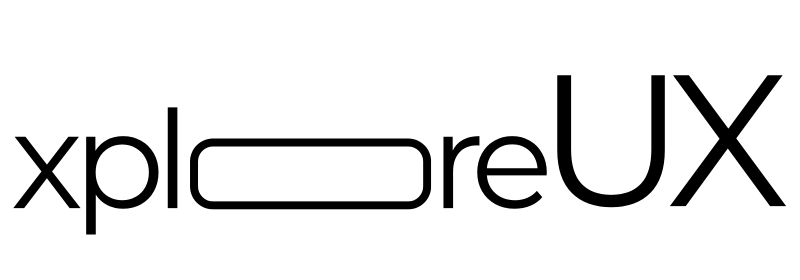
User experience (UX) design, creating a seamless and intuitive interface is the ultimate goal. However, achieving this is no easy feat. It requires careful planning, design, and most importantly, usability testing. While UX designers might have a clear vision of what a product should look like and how it should function, the true test lies in how users interact with it. Usability testing is the bridge that connects design intentions with real-world user experiences, and it’s where hidden insights are often uncovered.
In this post, we’ll dive into the secrets of usability testing and how they can be leveraged to enhance your product’s user experience, with some behind-the-scenes insights from recent usability tests we’ve conducted.
The Unspoken Importance of Usability Testing
Before we dive into the specifics, let’s understand why usability testing is crucial. Imagine designing a website or an app that looks stunning, boasts advanced features, but leaves users frustrated because they can’t find what they’re looking for. This scenario happens more often than you might think. The disconnect between design and user experience typically arises because designers and developers are too close to the project. They understand the product inside out, often making it challenging to predict potential user issues.
Usability testing addresses this by putting the product in the hands of real users who have no prior knowledge of its design or functionality. These tests reveal how intuitive, accessible, and enjoyable the product is from a user’s perspective, providing invaluable feedback that can make or break the success of the product.
Having conducted numerous usability tests, there are several key insights and strategies that consistently prove effective. Below, we uncover these usability testing secrets and how they can help you create a better user experience.
1. The Magic of the Right Test Participants
The first secret to successful usability testing is selecting the right participants. It’s not just about finding random users but finding users who closely represent your target audience. This step is crucial because these participants will mirror the behaviors, preferences, and challenges of your actual users.
In a recent usability test for an e-commerce platform, we made sure to recruit participants who frequently shop online but aren’t tech-savvy. This was deliberate because while the platform was designed to be user-friendly, we wanted to see how easy it would be for someone with average technical skills to navigate and complete a purchase. The insights were eye-opening; features we thought were intuitive were confusing for the participants. For instance, the “Quick Buy” button was often overlooked because it was too subtle. This led us to redesign the button to make it more prominent and clear, ultimately improving the user experience for the entire target demographic.
2. Context Matters: Testing in Real-World Environments
Another vital aspect of usability testing that often gets overlooked is the environment in which testing takes place. Users interact with products in various environments, and these can significantly impact their experience. Testing in a controlled environment like a lab can provide valuable data, but it’s also essential to conduct tests in real-world settings.
In one of our projects, we tested a mobile banking app by having participants use it while commuting. The real-world context introduced challenges like intermittent internet connections and distractions, which highlighted usability issues that wouldn’t have surfaced in a controlled environment. For instance, the app’s load times during transitions between screens were more noticeable and frustrating in real-world scenarios. This led us to optimise the app’s performance, ensuring a smoother experience even under less-than-ideal conditions.
3. Think Aloud Protocol: A Window into the User’s Mind
One of the most powerful tools in usability testing is the “think-aloud” protocol, where participants verbalise their thoughts as they navigate the product. This method provides direct insight into the user’s thought process, allowing you to understand their expectations, frustrations, and satisfactions in real-time.
During a recent usability test for a travel booking site, we asked participants to think aloud as they attempted to book a flight. Listening to their thought process revealed that many were confused about the difference between “basic economy” and “economy” fare options. This confusion stemmed from unclear labels and a lack of explanatory content. By simply adding brief descriptions under each fare type, we significantly reduced user confusion and increased booking completion rates.
4. Iterative Testing: The Power of Continuous Improvement
Usability testing is not a one-time event but an ongoing process. One of the biggest secrets to enhancing user experience is iterative testing—testing, refining, and then testing again. This approach allows you to continuously improve your product based on real user feedback.
In a project involving a fitness app, we adopted an iterative testing approach. After the initial round of testing, we identified issues with the app’s onboarding process. Users found it lengthy and cumbersome, leading to drop-offs. We redesigned the onboarding process to be shorter and more engaging, then conducted another round of testing. The improvements led to a significant increase in user retention. However, the iterative process didn’t stop there; we continued to gather feedback and refine features, ensuring the app consistently met user expectations.
5. Uncovering Hidden Insights Through Post-Test Interviews
Finally, while the usability test itself provides rich data, the post-test interview is where deeper insights often emerge. After the test, having a conversation with participants about their experience allows them to reflect and articulate thoughts they might not have expressed during the test.
For example, in a recent usability test for a recipe-sharing app, participants generally performed tasks well during the test. However, during the post-test interviews, several participants mentioned that they wished there was a way to filter recipes by cooking time more easily. This wasn’t an issue that came up during the test, but it was clearly something users valued. By incorporating this feedback, we added a prominent filter option on the home screen, which later usability tests confirmed was a well-received enhancement.
Maximising user acquisition is not just about marketing efforts; it’s about ensuring that every interaction a user has with your product is positive and fulfilling. Expert UX reviews offer a critical lens through which you can identify and address the barriers that may be hindering your growth.
By conducting heuristic evaluations, analysing user flow, prioritising mobile UX, improving accessibility, gathering user feedback, running A/B tests, and leveraging analytics, you can create a user experience that not only attracts new users but keeps them coming back.
Invest in UX, and you’ll find that the return on investment in terms of user acquisition is well worth the effort.
Usability testing is an invaluable tool in the UX designer’s arsenal, offering a direct line to understanding and improving user experiences. By carefully selecting participants, testing in real-world environments, employing techniques like the think-aloud protocol, embracing iterative testing, and conducting insightful post-test interviews, you can unlock hidden secrets that transform your product from good to great.
The ultimate goal of usability testing is not just to identify problems but to understand how real users interact with your product and why they behave the way they do. This understanding allows you to make informed decisions that lead to a more intuitive, accessible, and enjoyable user experience. As we’ve seen in the behind-the-scenes insights shared here, even the smallest changes inspired by usability testing can have a significant impact on the overall success of a product.
By embracing the secrets of usability testing, you position your product to not just meet user expectations but to exceed them, delivering an experience that keeps users coming back time and time again.





2 comments